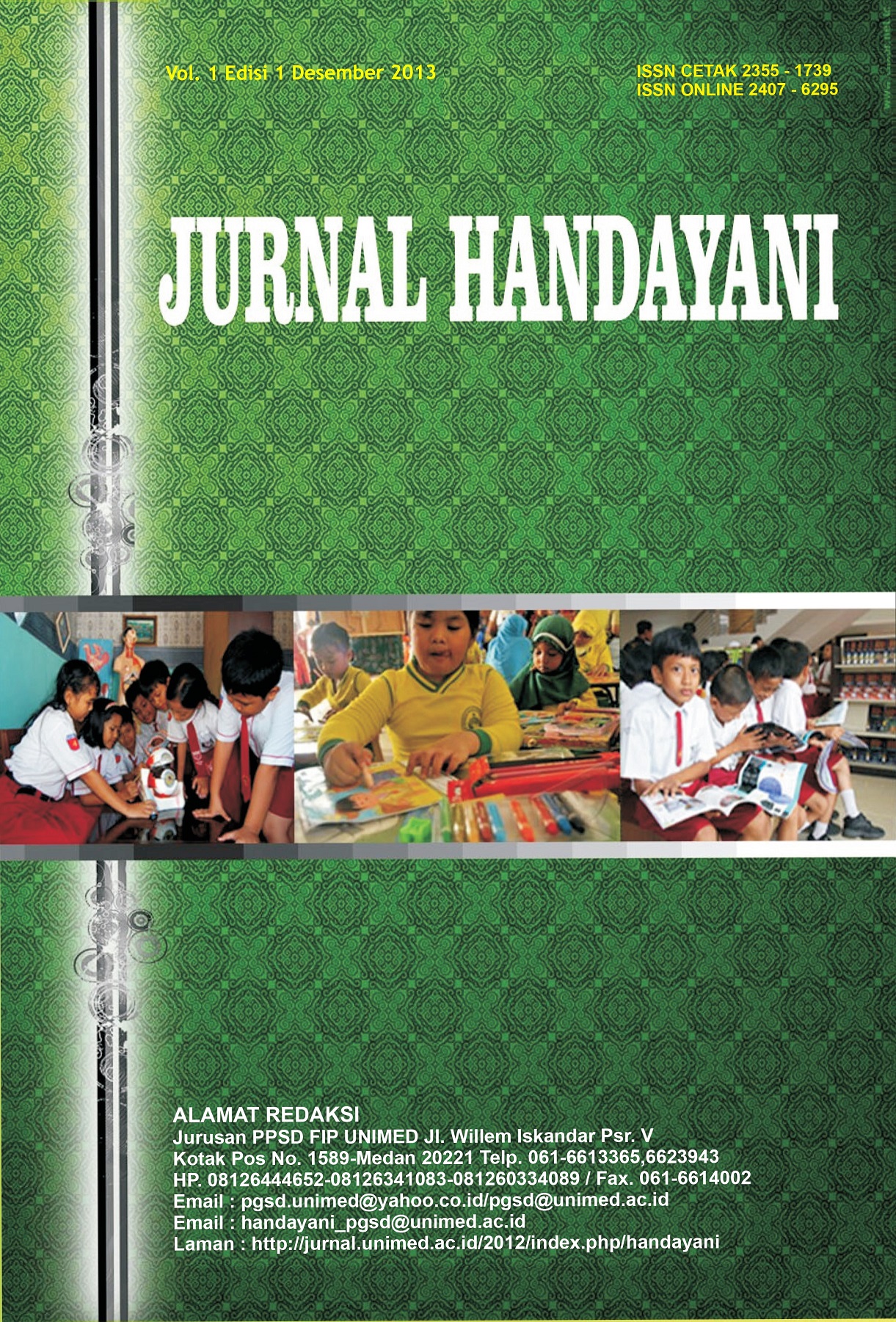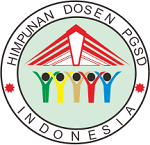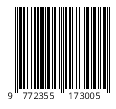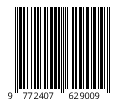UPAYA MENINGKATKAN KREATIVITAS BELAJAR SISWA DENGAN MENGGUNAKAN METODE MIND MAPPING PADA PELAJARAN MATEMATIKA
DOI:
https://doi.org/10.24114/jh.v1i1.1271Abstract
ABSTRAK Penelitian ini adalah Penelitian Tindakan Kelas (PTK) yang dilakukan dalam 2 siklus, dimana setian siklus terdiri dari 2 kali pertemuan. Dalam setiap siklus dilakukan 4 tahapan yaitu perencanaan, pelaksanaan tindakan, observasi dan refleksi. Subjek dalam penelitian ini adalah murid kelas V Sd Negeri 101780 Percut yang berjumlah 30 orang siswa yang terdiri dari 19 orang siswa perempuan dan 11 orang siswa laki-laki. Berdasarkan analisis data yang diperoleh Hasil observasi terhadap siklus I sampai siklus II menunjukkan adanya peningkatan aktivitas dan kreativitas siswa selama pembelajaran dengan menggunakan mind mapping. Hal tersebut dapat diketahui dari hasil skor penilaian untuk siklus I pertemuan 1 53,09% dan pertemuan 2 58,08% sedangkan untuk siklus II sebesar 69,96% sedangkan pertemuan 2 nya 82,04%. Dan nilai untuk keterampilan membuat mind mapping siklus I 54,91% sedangkan untuk siklus II 82,87%. Oleh karena itu metode Mind Mapping adalah salah satu alternative pada materi sifat-sifat bangun ruang di kelas V SD Negeri 101780 Percut. Kata Kunci : Kreativitas belajar, Metode Mind Mapping, IPADownloads
Published
2014-09-04
How to Cite
MAYANG SARI, T. S. (2014). UPAYA MENINGKATKAN KREATIVITAS BELAJAR SISWA DENGAN MENGGUNAKAN METODE MIND MAPPING PADA PELAJARAN MATEMATIKA. JURNAL HANDAYANI PGSD FIP UNIMED, 1(1). https://doi.org/10.24114/jh.v1i1.1271
Issue
Section
Articles
License
Copyright (c) 2014 TRI SUCI MAYANG SARI

This work is licensed under a Creative Commons Attribution-ShareAlike 4.0 International License.
Authors published with the Handayani PGSD FIP UNIMED Journal agree to the following terms:
- Authors retain copyright and grant the journal the right of first publication with the work simultaneously licensed under a Creative Commons Attribution License (CC BY-SA 4.0) that allows others to share the work with an acknowledgment of the work's authorship and initial publication in this journal.
- Authors are able to enter into separate, additional contractual arrangements for the non-exclusive distribution of the journal's published version of the work (e.g., post it to an institutional repository or publish it in a book), with an acknowledgment of its initial publication in this journal.
- Authors are permitted and encouraged to post their work online (e.g., in institutional repositories or on their website) prior to and during the submission process, as it can lead to productive exchanges, as well as earlier and greater citation of published work. (See The Effect of Open Access)
















